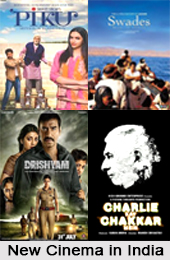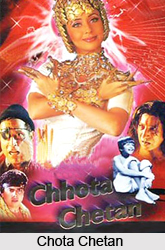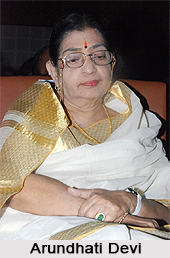 New Cinema in India is the cinema meant for the intelligent class and the evolution of the same occurred with the Indian Peoples Theatre Association`s foray into theatrical scenario. It was Dhundiraj Govind Phalke or in short Dadasaheb Phalke who inaugurated Indian cinema with Raja Harishchandra, the first film in India to be shot with an entirely Indian crew, which was based on a mythological tale. The Hindi Popular Cinema differed from the line and the parameter by which New Cinema in India was mapped. The New Cinema had been the cinema of Modern India the voice of expression, of new found identity, of the cultural Renaissance of modern India.
New Cinema in India is the cinema meant for the intelligent class and the evolution of the same occurred with the Indian Peoples Theatre Association`s foray into theatrical scenario. It was Dhundiraj Govind Phalke or in short Dadasaheb Phalke who inaugurated Indian cinema with Raja Harishchandra, the first film in India to be shot with an entirely Indian crew, which was based on a mythological tale. The Hindi Popular Cinema differed from the line and the parameter by which New Cinema in India was mapped. The New Cinema had been the cinema of Modern India the voice of expression, of new found identity, of the cultural Renaissance of modern India.
In the late 1940s and through the 1950s, Italian neo-realism and the activities of the leftist Indian Peoples` Theatre Association (IPTA) influenced Hindi cinema, as seen in the works of radical writer-filmmakers such as K.A. Abbas {Dharti Ke Lai), lyricists such as Sahir Ludhianvi, and directors such as Chetan Anand (Neecha Nagar), Bimal Roy (Do Bigha Zameen), and Zia Sarhadi (Footpath).
In the 1970s, middle-class filmgoers found an alternative in the middle-of-the-road cinema spearheaded by the likes of Hrishikesh Mukherjee, Basu Chatterjee, Basu Bhattacharya and Gulzar. Alongside another superstar emerged on the screen of Hindi cinema, Amitabh Bachchan. With the passage of time the history of Hindi cinema witnessed the birth of new stars on its horizon. Aspirants from different parts of Indian came to Mumbai to try their luck but only few could survive to become the most sought after Bollywood actors or Bollywood actresses. Again it was Satyajit Ray and his adventurous strokes that matured Indian with Ritwik Ghatak, and Aparna Sen Following.
In the early 1980s while the Indian Commercial Cinema was still entertaining the audiences a bunch of directors decided to portray reality on screen and thus the Indian Art Movies emerged. However with time this difference slowly blurred as audiences appreciated both the genres.
In the late 20th century Hindi cinema developed as an alternative mode of entertainment for the educated urban elite. The advent of sponsored serials on television and then the arrival of satellite channels meant that commercial cinema lost a sizeable chunk of its middle-class audience. However, musical, romantic family dramas such as Hum Aapke Hain Kaun, Dilwale Dulhaniya Le Jayenge and Kuch Kuch Hota Hai, coupled with the rapid spread of state-of-the-art multiplexes in India`s big cities, brought the well-heeled crowds back to the cinema halls. It is films like these for which the Bollywood Directors are often called `dream merchants` or showmen. The New Cinema even included the item songs pertaining to the ongoing flow of popular culture.






